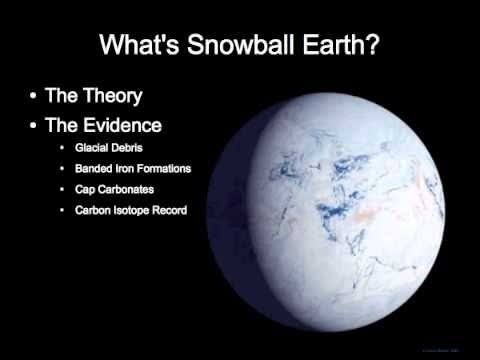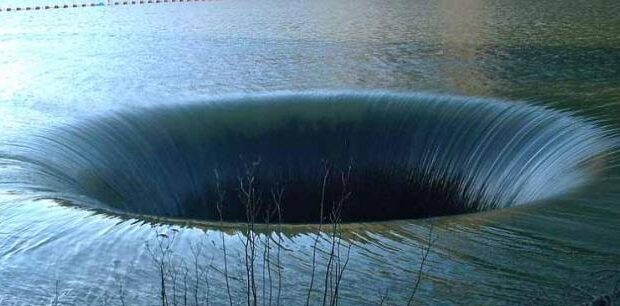The Unresolved Mystery of Earth’s Missing History
The history of the Earth has long been a subject of intrigue and study, with scientists continually striving to piece together the timeline of our planet’s existence. However, a significant gap in Earth’s history, often referred to as the Great Unconformity, has left researchers puzzled. Spanning 1.2 billion years between the Proterozoic and Cambrian periods, this missing layer of soil and rock has been a source of debate and curiosity among scientists.
Read Also : North Polestar about to explode
The Snowball Earth Theory

One theory that has been proposed to explain this phenomenon is the Snowball Earth theory. According to this hypothesis, the Earth underwent a global ice age, with its surface covered in ice. When the ice began to melt, it is believed to have swept away a layer of soil and rock, similar in size to Mount Everest. However, this theory also has its flaws, as it conflicts with data about the Earth’s magnetic field, which is essential for protecting our planet from harmful solar radiation.
Read Also : Malaria Vaccines Names
Bali and Lombok’s Animal Species Puzzle
In addition to the mystery of the missing layer, another unresolved puzzle in Earth’s history involves the islands of Bali and Lombok in Indonesia. Located only 35 kilometers apart, these islands are home to completely different species of animals and birds. An invisible barrier is said to prevent these creatures from mingling, adding to the list of unanswered questions in Earth’s intricate history.
Read Also : Liquid Tree 3
The Great Unconformity: A Global Phenomenon
The Great Unconformity is a global phenomenon that represents a 1.2 billion-year absence of soil layers between the Proterozoic and Cambrian periods. It was first identified by American geologist John Powell in the Hutton Canyon. The cause of this phenomenon is still a matter of debate and speculation, with theories including glaciation and tectonic activity. The study of the Great Unconformity continues to provide valuable insights into the Earth’s past and the evolution of its landscapes and lifeforms.
Read Also: Solar Plexus Chakra
Snowball Earth: A Possible Explanation
- Snowball Earth hypothesis: Earth’s surface covered in ice during a specific period in its history.
- Supports the hypothesis:
- Breakup of supercontinent Rodinia and release of sulfur.
- Formation of limestone-like stones trapping carbon dioxide, reducing greenhouse gases.
- Evolution of unicellular to multicellular organisms:
Researchers Peter and Gracius studied rocks from the Cambrian era.
Rocks contained calcium, potassium, iron, and silica, which were lethal to unicellular organisms.
Organisms excreted elements as minerals, repurposed for survival and later, bones, teeth, and shells.
Challenges:
Earth’s magnetic field was strong, raising questions about the plausibility of an ice age and the Snowball Earth theory.
Read Also : proof of Multiverse
The Invisible Barrier Between Bali and Lombok Islands

This unique scientific enigma occurs when species of birds and animals found on these two neighboring Indonesian islands, only 35 kilometers apart, exhibit distinct differences in their populations. This leads scientists to postulate the existence of an invisible barrier that prevents these creatures from crossing over and intermingling with each other.
Read Also : Gravity Light
This natural division highlights the complex biodiversity found on our planet and offers a fascinating glimpse into the biological processes that shape our world. The barrier, not yet fully understood, underscores the importance of ongoing scientific research and conservation efforts to preserve these unique ecosystems and the species that inhabit them.
The Role of Tectonic Activity in Earth’s History
Tectonic activity, a process involving the movement of the Earth’s crust, plays a crucial role in understanding the unconformity and the proposed snowball Earth theory. The melting of ice during the snowball theory has been attributed to the release of magma as lava, which also produced black rock layers. These black layers are indicative of tectonic activity, further suggesting that the breakage of Rodinia, the single supercontinent at the time, led to the melting of the ice. However, it is important to note that while these theories provide interesting explanations, they are still hypotheses that require more concrete evidence to be substantiated.
Read Also : Lab Grown Meat
In addition to the unconformity, there is another unsolved mystery in the Earth’s history – the invisible barrier that separates the animals and birds on the Indonesian islands of Bali and Lombok. This barrier, located only 35 kilometers away from each island, prevents the mixing of species, adding another layer of intrigue to the understanding of Earth’s history.
Tectonic activity has played a significant role in shaping Earth’s history, as seen in the formation of the unconformity and the proposed snowball Earth theory. However, these theories remain unproven, emphasizing the need for further exploration and investigation. Meanwhile, other unsolved mysteries like the invisible barrier between Bali and Lombok Islands add to
the complexity and intrigue of our planet’s history.
